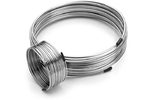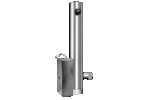- ▶
- Heaters/Source
- ▶
- Agilent Heaters and SensorsMass Spectrometry, Scientific Supplies & ManufacturingScientific Instrument Services 5973 Source Heater Tamper Resistant Allen Wrench 5973/5975 Quad Sensor 5985 Source Heater Assembly Agilent Interface Heater Assembly 5971 Interface Heater

- ▶
- Reference Material on InstrumentationArticle - A High Temperature Direct Probe for a Mass Spectrometer Design of a Direct Exposure Probe and Controller for use ona Hewlett-Packard 5989 Mass Spectrometer SIS AP1000 AutoProbe™ SIS AP2000 AutoProbe™ - Description of System HPP7: Direct Probe Electronics Console HPP7: Direct Probe for the Agilent (HP) 5973/5975 MSD HPP7: HP Direct Probe Application Notes HPP7: Installation Directions for the Direct Probe HPP7: Side Cover for the HP 5973 MSD HPP7: Support HPP7: Probe Inlet System for the Agilent (HP) 5973 and 5975 MSD with Automatic Indexed Stops HPP7: Theory of Operation of the Direct Probe and Probe Inlet System Direct Thermal Extraction Thermal Desorption Application Notes Environmental Thermal Desorption Application Notes Food Science Thermal Desorption Application Notes Forensic Thermal Desorption Application Notes GC Cryo-Trap Application Notes Headspace Application Notes Purge & Trap Thermal Desorption Application Notes Theory of Operation of the AutoDesorb® System AutoDesorb Notes for SIS Dealers Adsorbent Resin Application Notes Installation of the Short Path Thermal Desorption System on Agilent (HP) and Other GCs Installation of the Short Path Thermal Desorption System on a Varian 3400 GC AutoDesorb® System Development Team Thermal Desorption Applications and Reference Materials Installation of the Short Path Thermal Desorption System - TD5 Part I - Design & Operation of the Short Path ThermalDesorption System Installation Instructions for the Model 951 GC Cryo-Trap on the HP 5890 Series GC Installation Instructions for the Model 961 GC Cryo-Trap on the HP 5890 Series GC Operation of the Model 951/961 GC Cryo-Trap SIS GC Cryo Traps - Theory of Operation NIST/EPA/NIH Mass Spectral Enhancements - 1998 version (NIST98) SIMION 3D Ion Optics Class Mass Spectrometer Source Cleaning Methods MS Tip: Mass Spectrometer Source Cleaning Procedures Mass Spec Source Cleaning Procedures Micro-Mesh® Abrasive Sheets Research Papers Using New Era Syringe Pump Systems EI Positive Ion Spectra for Perfluorokerosene (PFK) Cap Liner Information How do I convert between fluid oz and milliliters? Which bottle material should I choose? Which bottle mouth should I choose? The Bottle Selection Guide CGA Connections for Gas Tanks Chemical Reaction Interface Mass Spectrometry (CRIMS)

- Instrument Tubing
- ▶
- Gas RegulatorsModel 3530 Series - Single Stage Purity Brass Regulator Model 3510 Series - Single Stage High Purity Stainless Steel Regulators Model 3120 Series - Dual Stage Purity Brass Regulator Model 3810 Series - Dual Stage High Purity Stainless Steel Regulators Tescom Gas Line Regulators 3420 Series Tescom Gas Line Regulators 3450 Series Concoa In-Line Regulators Model 304 Series Concoa In-Line Regulators Model 324 Series
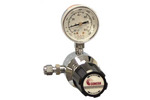
- TD
- ▶
- AccessoriesTD Supply Kit Desorption Tubes Adsorbent Resins Desorption Tube Needles Desorption Tube Seals Desorption System Fittings GC Cryo-Trap Extraction Cell TD Sample Loader Prepacked, Conditioned Desorption Tubes Desorption Tube Packing Accessories Stainless Steel Purge Heads Injection Port Liners Tenax TA Poster TD Application Notes Customer Service

- GCColumns Fused Silica Tubing Instrument Tubing Injection Port Liners Septa by Manufacturer SIS GC Cryo-Traps Ferrules Valves Swagelok® Fittings Pyrolysis Probe Accessories Gas Generators Gas Regulators Gas Purifiers and Filters Syringes SGE MEPS™-Micro Extraction by Packed Sorbent Purge and Trap System SGE SilFlow™ Stainless Steel Micro-Fluidic Platform Accessories NIST GC RI Library Other GC Supplies Catalog Page D1
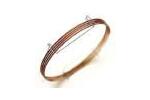
- ▶
- GC Cryo-traps
- LiteratureApplication Notes Adsorbent Resins Guide Mass Spec Tips SDS Sheets FAQ MS Calibration Compound Spectra Manuals MS Links/Labs/ Organizations MS Online Tools Flyers on Products/Services Scientific Supplies Catalog About Us NextAdvance Bullet Blender® Homogenizer Protocols Micro-Mesh® Literature Instrumentation Literature Agilent GC/MS Literature SIS News / E-Mail Newsletter NIST MS Database - Update Notifications

- ▶
- GC Cryo-Trap Application NotesNote 43: Volatile Organic Composition In Blueberries Note 42: The Influence of Pump Oil Purity on Roughing Pumps Note 41: Hydrocarbon Production in Pine by Direct Thermal Extraction Note 40: Comparison of Septa by Direct Thermal Extraction Note 39: Comparison of Sensitivity Of Headspace GC, Purge and Trap Thermal Desorption and Direct Thermal Extraction Techniques For Volatile Organics Note 38: A New Micro Cryo-Trap For Trapping Of Volatiles At the Front Of a GC Capillary Column Note 37: Volatile Organic Emissions from Automobile Tires Note 36: Identification Of Volatile Organic Compounds In a New Automobile Note 34: Selection Of Thermal Desorption and Cryo-Trap Parameters In the Analysis Of Teas Note 31: Volatile Organic Composition in Several Cultivars of Peaches Note 30: Comparison Of Cooking Oils By Direct Thermal Extraction and Purge and Trap GC/MS Note 29: Analysis Of Volatile Organics In Oil Base Paints By Automated Headspace Sampling and GC Cryo-Focusing Note 28: Analysis Of Volatile Organics In Latex Paints By Automated Headspace Sampling and GC Cryo-Focusing Note 27: Analysis of Volatile Organics In Soils By Automated Headspace GC Note 24: Selection of GC Guard Columns For Use With the GC Cryo-Trap Note 19: A New Programmable Cryo-Cooling/Heating Trap for the Cryo-Focusing of Volatiles and Semi-Volatiles at the Head of GC Capillary Columns

- Forensic Thermal Desorption Application NotesNote 95: Detection of Explosives on Clothing Material by Direct and AirSampling Thermal Desorption GC/MS Note 42: The Influence of Pump Oil Purity on Roughing Pumps Note 41: Hydrocarbon Production in Pine by Direct Thermal Extraction Note 40: Comparison of Septa by Direct Thermal Extraction Note 39: Comparison of Sensitivity Of Headspace GC, Purge and Trap Thermal Desorption and Direct Thermal Extraction Techniques For Volatile Organics Note 37: Volatile Organic Emissions from Automobile Tires Note 29: Analysis Of Volatile Organics In Oil Base Paints By Automated Headspace Sampling and GC Cryo-Focusing Note 28: Analysis Of Volatile Organics In Latex Paints By Automated Headspace Sampling and GC Cryo-Focusing Note 27: Analysis of Volatile Organics In Soils By Automated Headspace GC Note 23: Frangrance Qualities in Colognes Note 22: Comparison Of Volatile Compounds In Latex Paints Note 21: Detection and Identification Of Volatile and Semi-Volatile Organics In Synthetic Polymers Used In Food and Pharmaceutical Packaging Note 20: Using Direct Thermal Desorption to Assess the Potential Pool of Styrene and 4-Phenylcyclohexene In Latex-Backed Carpets Note 7: Chemical Residue Analysis of Pharmaceuticals Using The Short Path Thermal Desorption System Note 6: Direct Thermal Analysis of Plastic Food Wraps Using the Short Path Thermal Desorption System Note 5: Direct Thermal Analysis Using the Short Path Thermal Desorption System Note 3: Indoor Air Pollution Note 2: Detection of Arson Accelerants Using Dynamic Headspace with Tenax® Cartridges Thermal Desorption and Cryofocusing Note 1: Determination of Off-Odors and Other Volatile Organics In Food Packaging Films By Direct Thermal Analysis-GC-MS

- Application NotesNote 103: EPA Method 325B, Novel Thermal Desorption Instrument Modification to Improve Sensitivity Note 102: Identification of Contaminants in Powdered Beverages by Direct Extraction Thermal Desorption GC/MS Note 101: Identification of Contaminants in Powdered Foods by Direct Extraction Thermal Desorption GC/MS Note 100: Volatile and Semi-Volatile Profile Comparison of Whole Versus Cracked Versus Dry Homogenized Barley Grains by Direct Thermal Extraction Note 99: Volatile and Semi-Volatile Profile Comparison of Whole vs. Dry Homogenized Wheat, Rye and Barley Grains by Direct Thermal Extraction GC/MS Note 98: Flavor and Aroma Profiles of Truffle Oils by Thermal Desorption GC/MS Note 97: Flavor Profiles of Imported and Domestic Beers by Purge & Trap Thermal Desorption GC/MS Note 96: Reducing Warping in Mass Spectrometer Filaments, with SISAlloy® Yttria/Rhenium Filaments Note 95: Detection of Explosives on Clothing Material by Direct and AirSampling Thermal Desorption GC/MS Note 94: Detection of Nepetalactone in the Nepeta Cataria Plant by Thermal Desorption GC/MS Note 93: Detection of Benzene in Carbonated Beverages with Purge & Trap Thermal Desorption GC/MS Note 92: Yttria Coated Mass Spectrometer Filaments Note 91: AutoProbe DEP Probe Tip Temperatures Note 90: An Automated MS Direct Probe for use in an Open Access Environment Note 89: Quantitation of Organics via a Mass Spectrometer Automated Direct Probe Note 88: Analysis of Silicone Contaminants on Electronic Components by Thermal Desorption GC-MS Note 87: Design and Development of an Automated Direct Probe for a Mass Spectrometer Note 86: Simulation of a Unique Cylindrical Quadrupole Mass Analyzer Using SIMION 7.0. Note 85: Replacing an Electron Multiplier in the Agilent (HP) 5973 MSD Note 84: Vacuum Pump Exhaust Filters - Charcoal Exhaust Traps Note 83: Vacuum Pump Exhaust Filters - Oil Mist Eliminators Note 82: Vacuum Pump Exhaust Filters Note 81: Rapid Bacterial Chemotaxonomy By DirectProbe/MSD Note 80: Design, Development and Testing of a Microprocessor ControlledAutomated Short Path Thermal Desorption Apparatus Note 79: Volatile Organic Compounds From Electron Beam Cured and Partially Electron Beam Cured Packaging Using Automated Short Path Thermal Desorption Note 78: A New Solution to Eliminate MS Down-Time With No-Tool-Changing of Analytical GC Columns Note 77: The Determination of Volatile Organic Compounds in VacuumSystem Components Note 76: Determination of the Sensitivity of a CRIMS System Note 75: An Apparatus for Sampling Volatile Organics From LivePlant Material Using Short Path Thermal Desorption Note 74: Examination of Source Design in Electrospray-TOF Using SIMION 3D Note 73: The Analysis of Perfumes and their Effect on Indoor Air Pollution Note 72: 1998 Version of the NIST/EPA/NIH Mass Spectral Library, NIST98 Note 71: Flavor Profile Determination of Rice Samples Using Shor tPath Thermal Desorption GC Methods Note 70: Application of SIMION 6.0 To a Study of the Finkelstein Ion Source: Part II Note 69: Application of SIMION 6.0 To a Study of the Finkelstein Ion Source: Part 1 Note 68: Use of a PC Plug-In UV-Vis Spectrometer To Monitor the Plasma Conditions In GC-CRIMS Note 67: Using Chemical Reaction Interface Mass Spectrometry (CRIMS) To Monitor Bacterial Transport In In Situ Bioremediation Note 66: Probe Tip Design For the Optimization of Direct Insertion Probe Performance Note 65: Determination of Ethylene by Adsorbent Trapping and Thermal Desorption - Gas Chromatography Note 64: Comparison of Various GC/MS Techniques For the Analysis of Black Pepper (Piper Nigrum) Note 63: Determination of Volatile and Semi-Volatile Organics in Printer Toners Using Thermal Desorption GC Techniques Note 62: Analysis of Polymer Samples Using a Direct Insertion Probe and EI Ionization Note 61: Analysis of Sugars Via a New DEP Probe Tip For Use With theDirect Probe On the HP5973 MSD Note 60: Programmable Temperature Ramping of Samples Analyzed ViaDirect Thermal Extraction GC/MS Note 59: Computer Modeling of a TOF Reflectron With Gridless Reflector Using SIMION 3D Note 58: Direct Probe Analysis and Identification of Multicomponent Pharmaceutical Samples via Electron Impact MS Note 57: Aroma Profiles of Lavandula species Note 56: Mass Spec Maintenance & Cleaning Utilizing Micro-Mesh® Abrasive Sheets Note 55: Seasonal Variation in Flower Volatiles Note 54: Identification of Volatile Organic Compounds in Office Products Note 53: SIMION 3D v6.0 Ion Optics Simulation Software Note 52: Computer Modeling of Ion Optics in Time-of-Flight mass Spectrometry Using SIMION 3D Note 51: Development and Characterization of a New Chemical Reaction Interface for the Detection of Nonradioisotopically Labeled Analytes Using Mass Spectrometry (CRIMS) Note 50: The Analysis of Multiple Component Drug Samples Using a Direct Probe Interfaced to the HP 5973 MSD Note 49: Analysis of Cocaine Utilizing a New Direct Insertion Probe on a Hewlett Packard 5973 MSD Note 48: Demonstration of Sensitivity Levels For the Detection of Caffeine Using a New Direct Probe and Inlet for the HP 5973 MSD Note 47: The Application Of SIMION 6.0 To Problems In Time-of-Flight Mass Spectrometry Note 46: Delayed Extraction and Laser Desorption: Time-lag Focusing and Beyond Note 45: Application of SIMION 6.0 to Filament Design for Mass Spectrometer Ionization Sources Note 44: The Design Of a New Direct Probe Inlet For a Mass Spectrometer Note 43: Volatile Organic Composition In Blueberries Note 42: The Influence of Pump Oil Purity on Roughing Pumps Note 41: Hydrocarbon Production in Pine by Direct Thermal Extraction Note 40: Comparison of Septa by Direct Thermal Extraction Note 39: Comparison of Sensitivity Of Headspace GC, Purge and Trap Thermal Desorption and Direct Thermal Extraction Techniques For Volatile Organics Note 38: A New Micro Cryo-Trap For Trapping Of Volatiles At the Front Of a GC Capillary Column Note 37: Volatile Organic Emissions from Automobile Tires Note 36: Identification Of Volatile Organic Compounds In a New Automobile Note 35: Volatile Organics Composition of Cranberries Note 34: Selection Of Thermal Desorption and Cryo-Trap Parameters In the Analysis Of Teas Note 33: Changes in Volatile Organic Composition in Milk Over Time Note 32: Selection and Use of Adsorbent Resins for Purge and Trap Thermal Desorption Applications Note 31: Volatile Organic Composition in Several Cultivars of Peaches Note 30: Comparison Of Cooking Oils By Direct Thermal Extraction and Purge and Trap GC/MS Note 29: Analysis Of Volatile Organics In Oil Base Paints By Automated Headspace Sampling and GC Cryo-Focusing Note 28: Analysis Of Volatile Organics In Latex Paints By Automated Headspace Sampling and GC Cryo-Focusing Note 27: Analysis of Volatile Organics In Soils By Automated Headspace GC Note 26: Volatile Organics Present in Recycled Air Aboard a Commercial Airliner Note 25: Flavor and Aroma in Natural Bee Honey Note 24: Selection of GC Guard Columns For Use With the GC Cryo-Trap Note 23: Frangrance Qualities in Colognes Note 22: Comparison Of Volatile Compounds In Latex Paints Note 21: Detection and Identification Of Volatile and Semi-Volatile Organics In Synthetic Polymers Used In Food and Pharmaceutical Packaging Note 20: Using Direct Thermal Desorption to Assess the Potential Pool of Styrene and 4-Phenylcyclohexene In Latex-Backed Carpets Note 19: A New Programmable Cryo-Cooling/Heating Trap for the Cryo-Focusing of Volatiles and Semi-Volatiles at the Head of GC Capillary Columns Note 18: Determination of Volatile Organic Compounds In Mushrooms Note 17: Identification of Volatile Organics in Wines Over Time Note 16: Analysis of Indoor Air and Sources of Indoor Air Contamination by Thermal Desorption Note 14: Identification of Volatiles and Semi-Volatiles In Carbonated Colas Note 13: Identification and Quantification of Semi-Volatiles In Soil Using Direct Thermal Desorption Note 12: Identification of the Volatile and Semi-Volatile Organics In Chewing Gums By Direct Thermal Desorption Note 11: Flavor/Fragrance Profiles of Instant and Ground Coffees By Short Path Thermal Desorption Note 10: Quantification of Naphthalene In a Contaminated Pharmaceutical Product By Short Path Thermal Desorption Note 9: Methodologies For the Quantification Of Purge and Trap Thermal Desorption and Direct Thermal Desorption Analyses Note 8: Detection of Volatile Organic Compounds In Liquids Utilizing the Short Path Thermal Desorption System Note 7: Chemical Residue Analysis of Pharmaceuticals Using The Short Path Thermal Desorption System Note 6: Direct Thermal Analysis of Plastic Food Wraps Using the Short Path Thermal Desorption System Note 5: Direct Thermal Analysis Using the Short Path Thermal Desorption System Note 4: Direct Analysis of Spices and Coffee Note 3: Indoor Air Pollution Note 2: Detection of Arson Accelerants Using Dynamic Headspace with Tenax® Cartridges Thermal Desorption and Cryofocusing Note 1: Determination of Off-Odors and Other Volatile Organics In Food Packaging Films By Direct Thermal Analysis-GC-MS Tech No. "A" Note 14: Elimination of "Memory" Peaks in Thermal Desorption Improving Sensitivity in the H.P. 5971 MSD and Other Mass Spectrometers - Part I of II Improving Sensitivity in the H.P. 5971 MSD and Other Mass Spectrometers- Part II of II Adsorbent Resins Guide Development and Field Tests of an Automated Pyrolysis Insert for Gas Chromatography. Hydrocarbon Production in Pine by Direct Thermal Extraction A New Micro Cryo-Trap for the Trapping of Volatiles at the Front of a GC Capillary (019P) - Comparison of Septa by Direct Thermal Extraction Volatile Organic Composition in Blueberry Identification of Volatile Organic Compounds in Office Products Detection and Indentification of Volatiles in Oil Base Paintsby Headspace GC with On Column Cryo-Trapping Evaluation of Septa Using a Direct Thermal Extraction Technique INFLUENCE OF STORAGE ON BLUEBERRY VOLATILES Selection of Thermal Desorption and Cryo-Trap Parameters in the Analysis of Teas Redesign and Performance of a Diffusion Based Solvent Removal Interface for LC/MS The Design of a New Direct Probe Inlet for a Mass Spectrometer Analytes Using Mass Spectrometry (CRIMS) Application of SIMION 6.0 to Filament Design for Mass Spectrometer Ionization Sources A Student Guide for SIMION Modeling Software Application of SIMION 6.0 to Problems in Time-of-flight Mass Spectrometry Comparison of Sensitivity of Headspace GC, Purge and TrapThermal Desorption and Direct Thermal Extraction Techniques forVolatile Organics The Influence of Pump Oil Purity on Roughing Pumps Analysis of Motor Oils Using Thermal Desorption-Gas Chromatography-Mass Spectrometry IDENTIFICATION OF VOLATILE ORGANIC COMPOUNDS IN PAPER PRODUCTS Computer Modeling of Ion Optics in Time-of-Flight mass Spectrometry using SIMION 3D Seasonal Variation in Flower Volatiles Development of and Automated Microprocessor Controlled Gas chromatograph Fraction Collector / Olfactometer Delayed Extraction and Laser Desorption: Time-lag Focusing and Beyond A New Micro Cryo-Trap for the Trapping of Volatiles at the Front of a GC Column Design of a Microprocessor Controlled Short Path Thermal Desorption Autosampler Computer Modeling of Ion Optics in Time-of-Flight Mass Spectrometry Using SIMION 3D Thermal Desorption Instrumentation for Characterization of Odors and Flavors

- Thermal Desorption Applications and Reference MaterialsDirect Thermal Extraction Headspace Environmental Food Science Applications Pharmaceuticals Forensic Note 103: EPA Method 325B, Novel Thermal Desorption Instrument Modification to Improve Sensitivity Note 102: Identification of Contaminants in Powdered Beverages by Direct Extraction Thermal Desorption GC/MS Note 101: Identification of Contaminants in Powdered Foods by Direct Extraction Thermal Desorption GC/MS Note 100: Volatile and Semi-Volatile Profile Comparison of Whole Versus Cracked Versus Dry Homogenized Barley Grains by Direct Thermal Extraction Note 99: Volatile and Semi-Volatile Profile Comparison of Whole vs. Dry Homogenized Wheat, Rye and Barley Grains by Direct Thermal Extraction GC/MS Note 98: Flavor and Aroma Profiles of Truffle Oils by Thermal Desorption GC/MS Note 97: Flavor Profiles of Imported and Domestic Beers by Purge & Trap Thermal Desorption GC/MS Note 95: Detection of Explosives on Clothing Material by Direct and AirSampling Thermal Desorption GC/MS Note 94: Detection of Nepetalactone in the Nepeta Cataria Plant by Thermal Desorption GC/MS Note 93: Detection of Benzene in Carbonated Beverages with Purge & Trap Thermal Desorption GC/MS Note 88: Analysis of Silicone Contaminants on Electronic Components by Thermal Desorption GC-MS Note 84: Vacuum Pump Exhaust Filters - Charcoal Exhaust Traps Note 83: Vacuum Pump Exhaust Filters - Oil Mist Eliminators Note 82: Vacuum Pump Exhaust Filters Note 80: Design, Development and Testing of a Microprocessor ControlledAutomated Short Path Thermal Desorption Apparatus Note 79: Volatile Organic Compounds From Electron Beam Cured and Partially Electron Beam Cured Packaging Using Automated Short Path Thermal Desorption Note 77: The Determination of Volatile Organic Compounds in VacuumSystem Components Note 75: An Apparatus for Sampling Volatile Organics From LivePlant Material Using Short Path Thermal Desorption Note 73: The Analysis of Perfumes and their Effect on Indoor Air Pollution Note 71: Flavor Profile Determination of Rice Samples Using Shor tPath Thermal Desorption GC Methods Note 65: Determination of Ethylene by Adsorbent Trapping and Thermal Desorption - Gas Chromatography Note 64: Comparison of Various GC/MS Techniques For the Analysis of Black Pepper (Piper Nigrum) Note 63: Determination of Volatile and Semi-Volatile Organics in Printer Toners Using Thermal Desorption GC Techniques Note 60: Programmable Temperature Ramping of Samples Analyzed ViaDirect Thermal Extraction GC/MS Note 57: Aroma Profiles of Lavandula species Note 55: Seasonal Variation in Flower Volatiles Note 54: Identification of Volatile Organic Compounds in Office Products Note 43: Volatile Organic Composition In Blueberries Note 42: The Influence of Pump Oil Purity on Roughing Pumps Note 41: Hydrocarbon Production in Pine by Direct Thermal Extraction Note 40: Comparison of Septa by Direct Thermal Extraction Note 39: Comparison of Sensitivity Of Headspace GC, Purge and Trap Thermal Desorption and Direct Thermal Extraction Techniques For Volatile Organics Note 38: A New Micro Cryo-Trap For Trapping Of Volatiles At the Front Of a GC Capillary Column Note 37: Volatile Organic Emissions from Automobile Tires Note 36: Identification Of Volatile Organic Compounds In a New Automobile Note 35: Volatile Organics Composition of Cranberries Note 34: Selection Of Thermal Desorption and Cryo-Trap Parameters In the Analysis Of Teas Note 33: Changes in Volatile Organic Composition in Milk Over Time Note 32: Selection and Use of Adsorbent Resins for Purge and Trap Thermal Desorption Applications Note 31: Volatile Organic Composition in Several Cultivars of Peaches Note 30: Comparison Of Cooking Oils By Direct Thermal Extraction and Purge and Trap GC/MS Note 29: Analysis Of Volatile Organics In Oil Base Paints By Automated Headspace Sampling and GC Cryo-Focusing Note 28: Analysis Of Volatile Organics In Latex Paints By Automated Headspace Sampling and GC Cryo-Focusing Note 27: Analysis of Volatile Organics In Soils By Automated Headspace GC Note 26: Volatile Organics Present in Recycled Air Aboard a Commercial Airliner Note 25: Flavor and Aroma in Natural Bee Honey Note 24: Selection of GC Guard Columns For Use With the GC Cryo-Trap Note 23: Frangrance Qualities in Colognes Note 22: Comparison Of Volatile Compounds In Latex Paints Note 21: Detection and Identification Of Volatile and Semi-Volatile Organics In Synthetic Polymers Used In Food and Pharmaceutical Packaging Note 20: Using Direct Thermal Desorption to Assess the Potential Pool of Styrene and 4-Phenylcyclohexene In Latex-Backed Carpets Note 19: A New Programmable Cryo-Cooling/Heating Trap for the Cryo-Focusing of Volatiles and Semi-Volatiles at the Head of GC Capillary Columns Note 18: Determination of Volatile Organic Compounds In Mushrooms Note 17: Identification of Volatile Organics in Wines Over Time Note 16: Analysis of Indoor Air and Sources of Indoor Air Contamination by Thermal Desorption Note 14: Identification of Volatiles and Semi-Volatiles In Carbonated Colas Note 13: Identification and Quantification of Semi-Volatiles In Soil Using Direct Thermal Desorption Note 12: Identification of the Volatile and Semi-Volatile Organics In Chewing Gums By Direct Thermal Desorption Note 11: Flavor/Fragrance Profiles of Instant and Ground Coffees By Short Path Thermal Desorption Note 10: Quantification of Naphthalene In a Contaminated Pharmaceutical Product By Short Path Thermal Desorption Note 9: Methodologies For the Quantification Of Purge and Trap Thermal Desorption and Direct Thermal Desorption Analyses Note 8: Detection of Volatile Organic Compounds In Liquids Utilizing the Short Path Thermal Desorption System Note 7: Chemical Residue Analysis of Pharmaceuticals Using The Short Path Thermal Desorption System Note 6: Direct Thermal Analysis of Plastic Food Wraps Using the Short Path Thermal Desorption System Note 5: Direct Thermal Analysis Using the Short Path Thermal Desorption System Note 4: Direct Analysis of Spices and Coffee Note 3: Indoor Air Pollution Note 2: Detection of Arson Accelerants Using Dynamic Headspace with Tenax® Cartridges Thermal Desorption and Cryofocusing Note 1: Determination of Off-Odors and Other Volatile Organics In Food Packaging Films By Direct Thermal Analysis-GC-MS

- ▶
- Headspace Application NotesNote 39: Comparison of Sensitivity Of Headspace GC, Purge and Trap Thermal Desorption and Direct Thermal Extraction Techniques For Volatile Organics Note 38: A New Micro Cryo-Trap For Trapping Of Volatiles At the Front Of a GC Capillary Column Note 29: Analysis Of Volatile Organics In Oil Base Paints By Automated Headspace Sampling and GC Cryo-Focusing Note 28: Analysis Of Volatile Organics In Latex Paints By Automated Headspace Sampling and GC Cryo-Focusing Note 27: Analysis of Volatile Organics In Soils By Automated Headspace GC

- ▶
- Note 29: Analysis Of Volatile Organics In Oil Base Paints By Automated Headspace Sampling and GC Cryo-Focusing (This Page)
1999
INTRODUCTION
A previous application note described the analysis of volatiles in latex base paints utilizing the headspace GC technique in conjunction with the GC Cryo-Trap. This application note extends these techniques to the analysis of volatiles in oil based paints. The combination of the headspace GC technique with the GC Cryo-Trap has proven to be a practical method for the analysis of latex paints as well as the oil based paints. The volatile content in the oil based paints is much higher than the water based paints; therefore, the methods have been modified to permit the analysis of the higher volatile levels in these samples. The following article will demonstrate the accuracy and reproducibility of this method.
The system consists of the LEAP CTC HS500 Automated Headspace Sampler mounted on top of the GC injection port and the SIS GC Cryo-Trap mounted inside the GC oven just under the injection port. The GC Cryo-Trap consists of a small heating/cooling chamber which surrounds the front 4 inches of the capillary or guard column. Liquid Nitrogen is utilized to permit the trapping of volatiles down to -180 degrees C. The GC Cryo-Trap permits the injection of large gas sample volumes and eliminates the need to cool the entire GC oven for cryo-focusing samples on column. During the headspace injection process, the volatiles in the gas sample when injected into the GC injection port are concentrated in a narrow band at the front of the GC capillary column. When the GC Cryo-Trap is subsequently heated, the trapped volatiles are released in a narrow band to be chromatographed via the GC capillary column. This results in the generation of sharp, well resolved GC peaks.
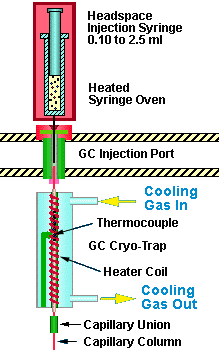
Figure 1 - Theory Of Operation Of Headspace Sampler and GC Cryo-Trap
Experimental
An HP 5890 Series II GC with electronic pressure control and a split/splitless injector was used for the following experiments. The HP Engine mass spectrometer was used as the detector in the EI mode. A J&W DB5-MS capillary column, 60 meters long by 0.32 mm I.D. x 0.25 micron film thickness was used in the GC oven.
The LEAP Model CTC HS500 Headspace Autosampler was attached to a HP Model 5890 Series II GC with electronic pressure control. The Headspace Autosampler is mounted directly over the injection port of the GC in order to permit the direct injection of the sample into the GC injection port. Samples to be analyzed are placed into 10 ml glass vials with crimp tops which are sequentially inserted into a heated oven which can be agitated during the timed equilibrium step. Headspace volumes between 0.1 ml and 2.5 ml can be accurately removed from the sample into a syringe for injection into the GC. This headspace system uses a heated syringe to directly inject the headspace volatiles from a heated sample into the GC injection port (Figure # 1). The volatiles are subsequently trapped in the GC Cryo-Trap at the head of the GC column.
The SIS GC-Cryo-Trap was attached to the bottom of the GC injection port inside the GC oven. A short 0.53 mm I.D. uncoated deactivated fused silica guard column was used from the GC injection port and through the GC Cryo-Trap. At the exit of the guard column, an SGE zero-dead volume union was used to join the uncoated guard column to the DB5-MS capillary column. The GC injection port was maintained at 200 degrees C and the GC Cryo-Trap was set at -160 degrees C during the trapping phase and 200 degrees C during the sample release phase and GC run time. The GC oven was held at 30 degrees C during the 5.0 minute injection phase and cryo-focusing and for an additional 5.0 minutes after the sample was released from the cryo-trap. The column oven was then temperature programmed to 65 degrees C at 5 degrees C per minute, then to 90 degrees C at 1 degree/min and finally to 200 degrees C at 10 degrees/min.. The slow temperature ramp between 65 degrees C and 90 degrees C assures the maximum separation of the large number of branched chain hydrocarbons that are present in these oil based paints.
The LEAP Headspace Autosampler was used in the automatic mode. Sample sizes less than 150 milligrams of the liquid oil base paints were weighed into 10 ml headspace vials on an analytical balance, sealed with PTFE lined septa, inserted into the headspace sampler tray and then consecutively inserted into the headspace heater block. They were heated to the required temperature between 60 degrees C and 120 degrees C with agitation for 10 minutes in the sample block after which 0.30 ml gas samples were injected into the GC injection port. The samples were injected very slowly (25 ul/sec or 1.5 ml/min). This slow injection assures the full and accurate delivery of the analytes to the injection port and for the accurate and reproducible splitting of the sample to the capillary column. Faster injection would result in less reproducible sample splitting due to the back pressure design of the HP injection port. Depending on the sample size weighed into the headspace vial as well as the gas volume injected into the GC injection port, the split ratio was varied between a 2:1 split up to a 60:1 split ratio. After injection into the cooled GC Cryo-Trap, the trap was maintained at the cryo-cooled temperature (-160 degrees C) for at least another 5.0 minutes before the volatiles were released and the GC program begun. This cryo cooling equilibration time after the injection is complete permits the entire contents of the GC injection port to be passed onto the Cryo-Trap guard column and flushes the injection port of any remaining sample thereby eliminating peak tailing and broadening. When the cryo-trap is rapidly heated, the released volatiles are eluted in a sharp band which produces highly resolved chromatography peaks.
Results and Discussion
A 0.085 gram sample of a clear varnish paint was heated to 90 degrees C in the headspace vial and then 0.30 ml of the headspace volume was injected and analyzed. The GC split ratio was set to 10:1 for this sample. The resulting chromatogram is shown in Figure # 2. Because the headspace volume is directly injected into the GC injection port and all the volatiles are cryo focused at the front of the column, a large number of compounds from very light volatiles up to the higher boiling hydrocarbons are trapped and subsequently analyzed. In addition to the common aromatics and straight chain hydrocarbons, a large number of branched chain hydrocarbons as well as a large number of substituted cyclohexane type compounds were detected and separated on the GC column. The GC column was slightly overloaded and the peak resolution can be improved if the sample size were reduced or the split ratio increased.
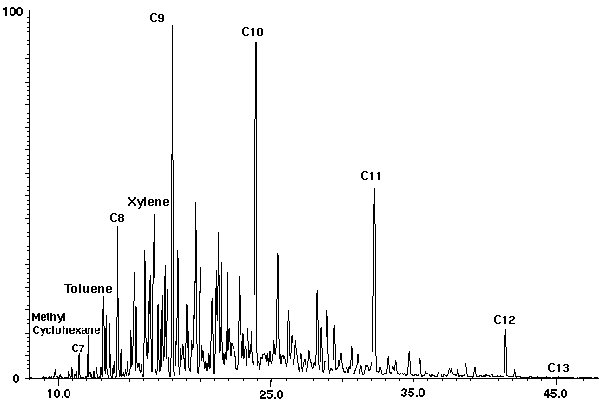
Figure 2 - Headspace / Cryo-Trap Analysis of Clear Varnish, Add 0.085 grams of Red Devil Clear Varnish, Heat to 90 Degrees For 10 min, Inject 0.3 ml of Headspace to GC at 1.5 ml/min. Trap at -160 Degrees For 5.0 min. GC At 30 Degrees For 10 min, To 65 At 5/min, To 90 At 1.0/min, Then To 200 At 10/min.
The headspace volume was injected into the GC injection port relatively slowly (1.5 ml/min). Normally, the user wants to inject as quickly as possible in order to obtain narrow highly resolved GC peaks. However, with the GC Cryo-Trap, speed of injection is not critical, since all the compounds injected are cryo-trapped at the front of the GC column or guard column inside the GC Cryo-Trap. When injecting large gas volumes into GC injection ports, as the HP split/splitless injector, quick injections would result in significant sample splitting in a very short time interval since these injectors work off a back pressure regulated system. If a large sample is injected quickly, the head pressure at the front of the GC column will rise rapidly. The GC injection port electronics will attempt to restore the pressure back to its original value by splitting the sample out the split vent. The split ratio will change rapidly and unevenly over a very short period of time. The accuracy of this splitting can be improved by slowly injecting the sample into the injection port so as to avoid a high back pressure in the injection port.
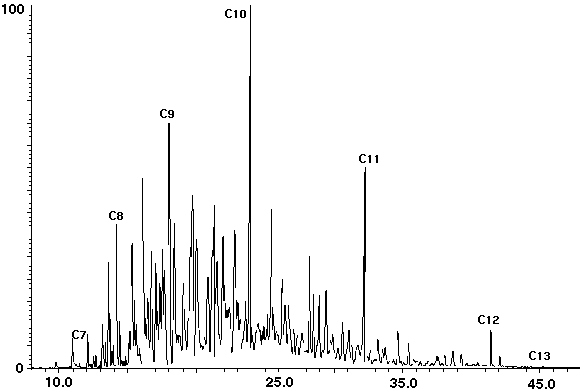
Figure 3 - Headspace / Cryo-Trap Analysis Of Clear Polyurethane, Add 0.0115 grams of Red Devil Clear Polyurethane, Heat To 90 Degrees For 10 min, Inject 0.3 ml Of Headspace To GC At 1.5 ml/min. Trap At -160 Degrees For 5.0 min. GC At 30 Degrees For 10 min, To 65 At 5/min, To 90 At 1.0/min, Then To 200 At 10/min.
In a likewise manner, samples of clear polyurethane (Figure # 3) and oil base enamel paint (Figure # 4) were also analyzed. Both of these paints contained less of the aromatic compounds, but both contained a wide variety of the branched chain hydrocarbons and the substituted cyclohexane type compounds. The largest molecular weight hydrocarbon detected was C13. This range could be extended by increasing the headspace temperature as will be demonstrated below.
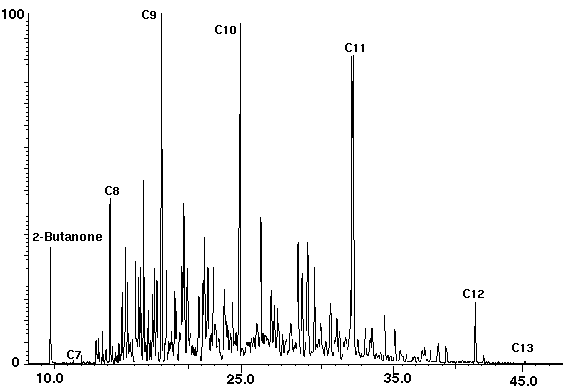
Figure 4 - Headspace / Cryo-Trap Analysis Of Oil Base Enamel Paint, Add 0.0115 grams Of Martin Oil Base Black Enamel, Heat To 90 Degrees For 10 min, Inject 0.3 ml Of Headspace To GC At 1.5 ml/min. Trap At -160 Degrees For 5.0 min. GC At 30 Degrees For 10 min, To 65 At 5/min, To 90 At 1.0/min, Then To 200 At 10/min.
Effect of Headspace Temperature
For this study, the clear varnish paint (0.030 grams) was weighed into a headspace vial. The GC split ratio was left at 10:1 for this study. The headspace vial was heated to various temperatures and 0.30 ml of the headspace gas was injected into the GC injection port and then cryo-trapped at -160 degrees C. As the headspace temperature is increased, the intensity of the higher boiling compounds increased (Figure # 5) as expected. Only minimal increase in the intensity of the lower boiling volatiles is seen below the C9 hydrocarbons as the headspace sample temperature increased. Depending on the range of volatiles requested, the user can select the headspace temperature to achieve the desired results. For the remainder of our study, we selected 90 degrees C as our headspace temperature. This enabled us to detect a wide range of aromatics, straight chain and branched chain hydrocarbons and the substituted cyclohexanes.
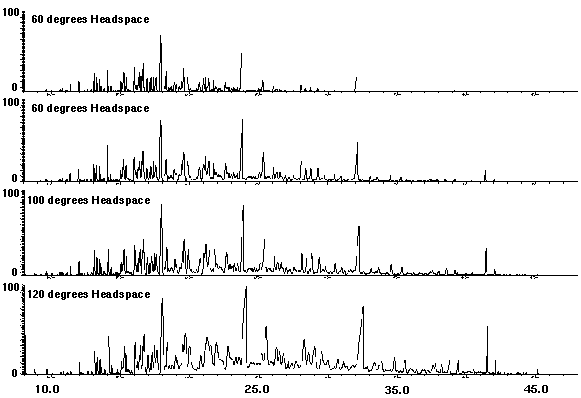
Figure 5 - Headspace / Cryo-Trap Analysis of Varnish at Various Headspace Temperatures, 0.030 grams Of Clear Varnish, equilibrate For 10 minutes At Indicated Headspace Temperature Then Inject 0.30 ml Of Headspace Volume Into GC Cryo-Trap At -160 Degrees C, Hold 5 min, Heat To 200 and Chromatograph.
Reproducibility of Sample Analysis
Questions often arise as to the accuracy and reproducibility of the headspace injection technique. Using the above described headspace method at a headspace heater temperature of 90 degrees C, a series of 0.119 gram samples of the clear varnish paint were analyzed. The split ratio was increased to 60:1 for these larger samples. As can be seen from Figure # 6, this technique is very reproducible. This is quite exemplary for the headspace injection technique since a large split ratio was used in the GC injection port and no internal standard was used to normalize the data. This method could readily be utilized as a quality control method for the comparison of different manufacturers paints. The results have proven to be quantitative and reproducible. Previous studies on water and soils have demonstrated that correlation coefficients for quantification have been close to 1.000 for most volatiles and the relative standard deviation of repetitive sampling is better than 5%.
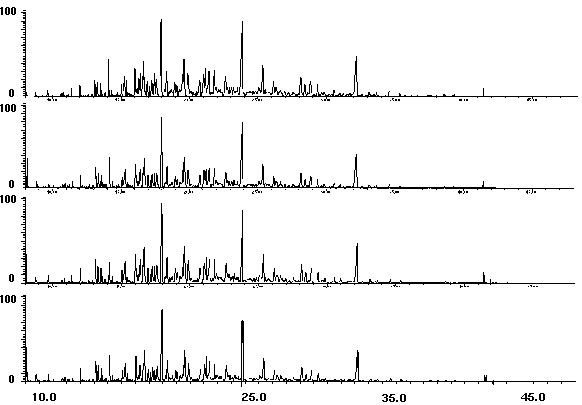
Figure 6 - Reproducibility At a 60:1 split of 0.119 gram sample, Headspace / Cryo-Trap Analysis Of Varnish At 120 Degrees C, Add 0.0119 grams Of Clear Varnish, Equilibrate For 10 minutes At 120 Degrees, Inject 0.30 ml Of Headspace Volume At a 60:1 Split Into GC Cryo-Trap At -160 degrees C, Hold For 5.0 min., Heat To 200 and Chromatograph.
Effect of Evaporation of Paints
Next, a study was undertaken in order to study which volatiles are most easily removed from a varnish sample during the normal drying process. A quantity of clear varnish (0.120 grams) was weighed into the headspace vial and each of the vials was purged with clean nitrogen at room temperature to simulate the process of normal drying of the clear varnish samples. The samples were subsequently analyzed as described above using a GC split ratio of 60:1 in the GC injection port. As the evaporation of the sample progressed, the amount of the lower boiling volatiles decreases as would be expected (Figure # 7). However, the levels of the higher boiling compounds increased in intensity as the degree of evaporation increased. These are the organic volatiles that would take the longest to evaporate in a normal drying process. Their increased intensity in the more highly evaporated samples can best be explained by the decreased competition for partition into the sealed headspace volume in the sample vial due to the absence of the lighter volatiles.
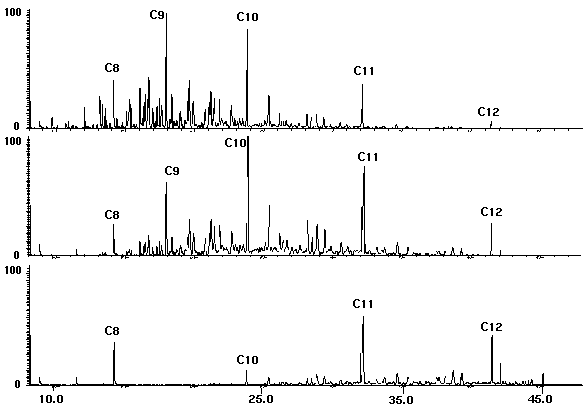
Figure 7 - Headspace / Cryo-Trap Analysis Of Varnish At Various Degrees of Evaporation, Add 0.120 grams Of Clear Varnish, Equilibrate For 10 minutes At 120 degrees C, Inject 0.30 ml of Headspace Volume Into GC (60:1 split) Cryo-Trap At -160 degrees C, Hold For 5.0 min., Heat To 200 and Chromatograph.
Conclusion
The use of the GC Cryo-Trap in conjunction with the automated headspace system has proven to be a powerful technique for the analysis of volatiles in oil based paints and varnishes. This technique could readily be adapted for either a quality control method for the analysis of volatiles in all types of paints or it could also be used as a comparison tool. Depending on the level of volatiles in the paints, the sample size can be varied as well as the GC split ratio so as not to overload the GC capillary column or GC detector. This combination of a headspace sampler and the GC Cryo-Trap and the versatile sampling technique permits the quantitative analysis of volatiles in various matrix samples over more than 4 decades of sensitivity utilizing capillary GC columns.
Most previous GC headspace methods have been done using packed GC columns and megabore capillary columns. However, it is now possible to inject large gas volumes (0.1 ml to +100 ml) into a microbore capillary column by concentrating the analytes in a narrow band at the front of the GC column over a time period from 1.0 minute to >30 minutes, then rapidly releasing the analytes for chromatography. The relatively slow injection of large sample volumes at injection rates of more than 1.0 ml/min results in an even delivery of sample to the injection port and the accurate and reproducible splitting and delivery of sample to the GC column. All of the volatiles are passed onto the capillary column and cryo-trapped and concentrated in a narrow band at the front of the GC column or guard column inside the GC Cryo-Trap. The resulting GC peaks are highly resolved and the retention times and the areas of the GC peaks are very reproducible.
The techniques permit the adjustment of a number of variables such as the sample temperature, the gas volume injected, the trapping temperature and the release temperature. This will permit the development of experimental conditions to fit the needs of the chemist. In addition to the analysis of volatiles in oil base and latex paints, this technique can be used for applications such as the analysis of volatiles in soils, residual solvents in pharmaceuticals, blood alcohols and other headspace techniques that could profit from the analysis of compounds on a capillary column or which could be enhanced by the injection of larger gas sample volumes or repetitive injections onto the GC column.


